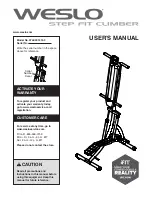
Intended use
Applications
16
099-005504-EW501
20.11.2015
3
Intended use
WARNING
Hazards due to improper usage!
Hazards may arise for persons, animals and material objects if the equipment is not
used correctly. No liability is accepted for any damages arising from improper usage!
• The equipment must only be used in line with proper usage and by trained or expert staff!
• Do not modify or convert the equipment improperly!
3.1
Applications
3.1.1
MIG/MAG standard welding
Metal arc welding using a wire electrode, where the arc and the weld pool are shielded from the
atmosphere with inert (MIG) or active (MAG) gasses or gas mixtures.
3.1.1.1 forceArc
Low-heat, directionally stable and powerful high-performance arc with deep fusion penetration for the
upper power range Unalloyed, low-alloy and high-alloy steels as well as high-tensile fine-grained steels.
3.1.1.2 rootArc
Short arc with perfect weld modelling capabilities for effortless gap bridging, especially for positional
welding
3.1.2
MIG/MAG pulse welding
Welding process for optimum welding results when joining unalloyed, low-allow and high-alloy steels and
aluminium thanks to controlled droplet transfer and targeted, adapted heat input.
3.1.2.1 forceArc puls
Effective extension of the forceArc arc. Secure sidewall fusion, easy to model and control by the user.
Ideal for welding filler and final passes in all power ranges and positions.
3.1.2.2 rootArc puls
The perfect enhancement for focused heat input for the higher performance range
3.1.3
TIG (Liftarc) welding
TIG welding procedure with arc striking by contact with the workpiece and subsequent removal of the
electrode.
3.1.4
MMA welding
Manual arc welding or, for short, MMA welding. It is characterised by the fact that the arc burns between
a melting electrode and the molten pool. There is no external protection; any protection against the
atmosphere comes from the electrode.
3.1.4.1 Air arc gouging
During gouging, an arc burns between a carbon electrode and the workpiece, heating the workpiece until
it is molten. At the same time, the molten metal is blown out with compressed air. Special electrode
holders with a compressed-air connection and carbon electrodes are required for gouging.
















































